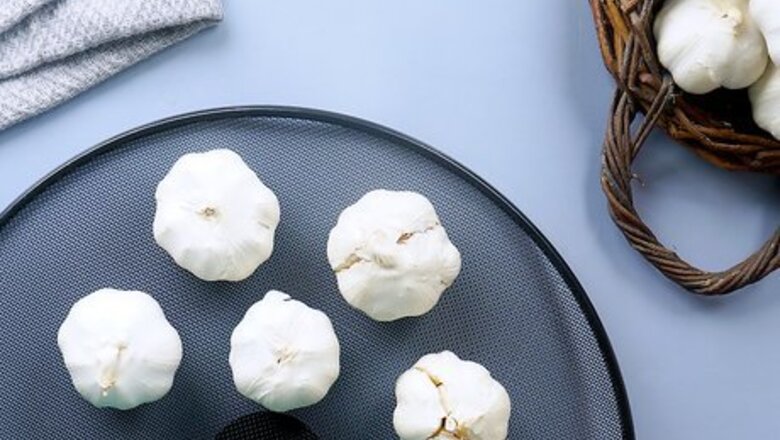
views
Air-Drying (Curing) Garlic Bulbs
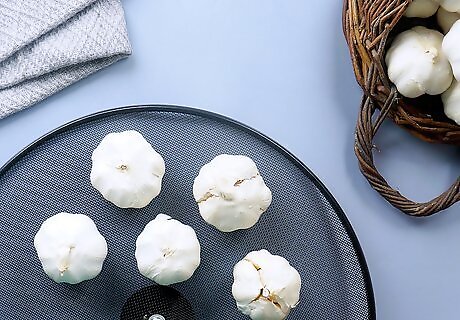
Lay or hang your harvested garlic in a warm, dry, ventilated place for up to 4 weeks. Breezy barns, basements, [1], or sheds make great locations as long as there’s good airflow, no bright sunlight, and the temperature stays consistently under 90 °F (32 °C). Lay garlic bulbs in a single layer on a [2] and a fan, or hang them from the ceiling with [3], [4], or mesh bags. Small bulbs cure faster than large ones, and curing takes less time in low humidity. The minimum time to cure garlic completely is 10 to 14 days. Curing is complete when the outer skin is dry and crispy, the neck is constricted, and the center of the stem is hard.
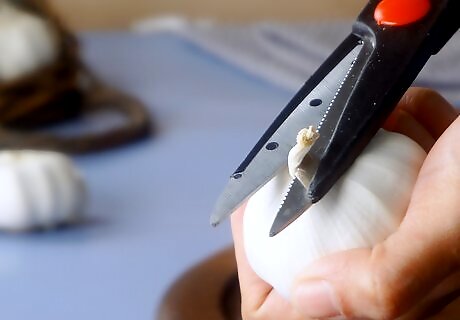
Trim the roots and stems before long term storage. Once the curing is complete, use garden shears or a sharp knife to cut the roots close to the bulb base. Trim the shoots so there’s about 1 inch (2.5 cm) left on top of the bulb. If you plan on braiding the garlic bulbs together for storage, leave the shoots long. The stems and roots can be trimmed before, during, or after curing.
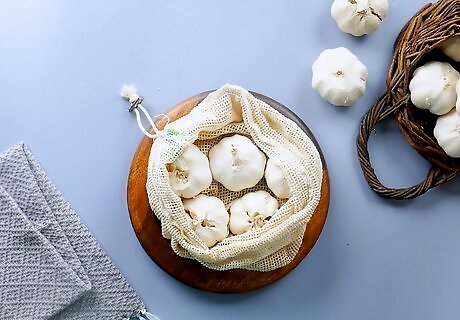
Store cured garlic bulbs in a cool, dry place with good ventilation. Pantries or countertops are great options as long as the bulbs stay out of the sun. Store them in breathable containers like mesh bags or loosely woven baskets to allow air circulation around the entire bulb. When the humidity is low (below 75%), cured garlic bulbs can last up to 2 months at room temperature. For long-term storage, keep cured bulbs around 30 °F (−1 °C). With good airflow, they’ll last up to 7 months. Replant the biggest bulbs for next year’s crop. Store these bulbs at around 50 °F (10 °C) in low humidity (below 70%).
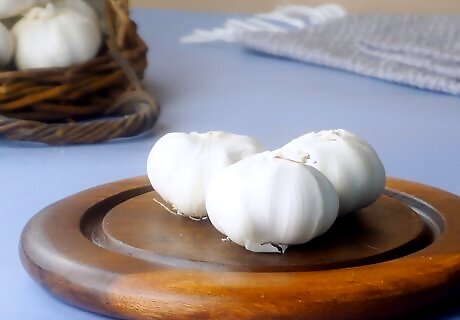
Braid garlic bulbs together for long-term, decorative storage after drying. The best time to braid is when the stems are half brown, but still pliable. Braid the stems like you’d braid hair—lay 3 stalks on a flat surface and complete 1 or 2 braids, then pull on the stalks so the bulbs are clustered together. Lay additional stalks over the piece in the center of the braid with the bulb hanging just below the cluster to add them to the braid. Tie the end of the braid with [5] or [6]. It’s easier to braid soft-neck varieties of garlic than hard-neck types. To braid hard-neck garlic, wrap the stems in a warm, damp towel to soften them up first. Hang your garlic braid away from heat and light to prevent sprouting and extend the bulbs’ shelf life.
Baking Garlic Cloves
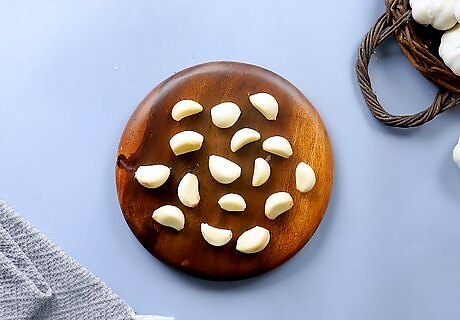
Peel and separate your garlic bulb into individual cloves. Tear away the outer layers of skin from the bulb with your fingers, then pull apart the cloves. Peel the cloves by smashing them with the flat side of a large knife and then pulling off the loosened skin. Alternatively, shake the cloves hard between 2 metal bowls or in a cocktail shaker to separate the cloves from the skin, or microwave the cloves for 20 seconds to loosen the skin. If you buy pre-peeled garlic cloves, plan to dry them within 48 hours of purchase for the best results.
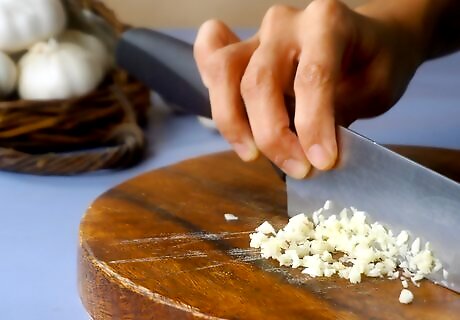
Slice or mince the peeled cloves and spread them out on a baking tray. Slice the cloves in half lengthwise if you want larger garlic “chips” to use later. If you plan on grinding garlic into powder, finely chop or mince the cloves into tiny pieces. Lay your garlic pieces on the tray in a single layer so that no pieces are touching each other. This is easier with larger pieces than finely minced pieces.
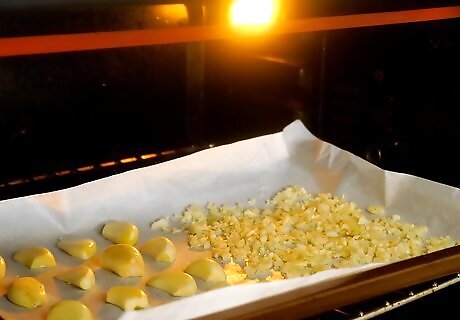
Bake your tray of sliced cloves on low heat for up to 8 hours. First, bake them at 140 °F (60 °C) for 2 hours. Then, reduce the heat to 130 °F (54 °C) and continue drying for another 4 to 6 hours until the garlic pieces are crispy and slightly browned. For even and thorough drying, don’t set your oven above 140 °F (60 °C).
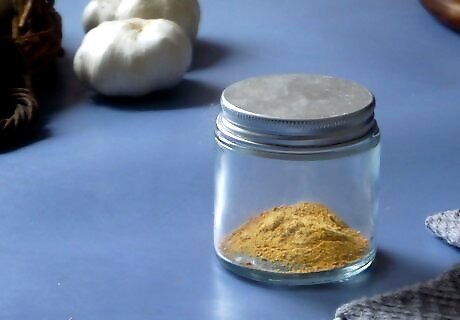
Store your dried garlic cloves in an airtight jar at room temperature. Keep the jar in a cool, dark cupboard or pantry for the maximum shelf life (up to 3 years!). Check your garlic occasionally to make sure no moisture has crept into the jar and been absorbed. Dried minced garlic doesn’t truly spoil—it just loses its flavor and aroma over time. To test it, crush some to taste and smell. If it's weak, replace it.
Dehydrating Garlic
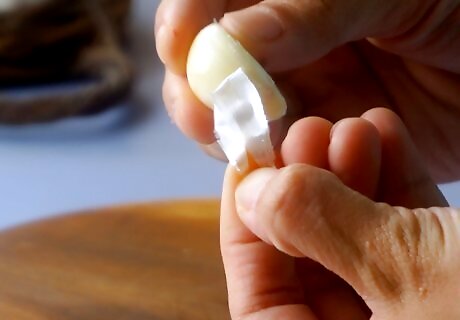
Peel your garlic bulb and the individual cloves after harvesting. First, tear away the outer layers of skin with your fingers. Then smash each clove with the flat side of a large knife or shake the cloves hard between 2 metal bowls or in a cocktail shaker to separate the cloves from the skin. Alternatively, place a whole bulb (with the outer layers of skin peeled off) in the microwave for 20 seconds to steam and loosen the cloves from their wrappings. If you buy pre-peeled garlic cloves, start drying them within 48 hours of purchase for the best results.
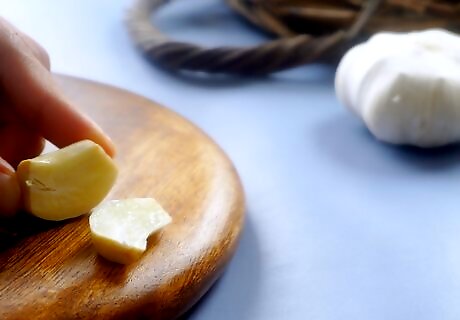
Chop the cloves and spread them out on the dehydrator tray. Slice the cloves in half if you want to make large garlic pieces, or mince them with a knife or food processor if you plan on making garlic powder later. Spread the garlic pieces evenly over the tray so the pieces aren’t touching (this is harder with minced garlic, but they will dehydrate evenly since the pieces are so small). Garlic doesn’t require any pretreatment before dehydrating. Once it’s chopped and on the tray, it’s ready to dry out.
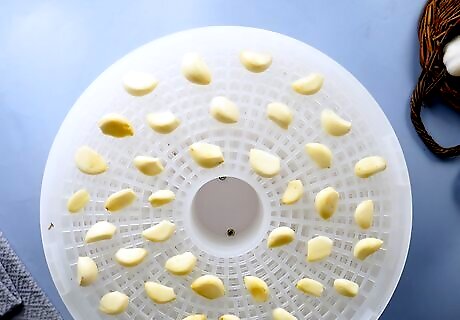
Dehydrate your garlic on a low temperature setting for up to 8 hours. Most dehydrators only have one temperature setting around 140 °F (60 °C) (if possible, avoid temperatures higher than this). Generally, it will take 6 to 8 hours to fully dehydrate. Follow the recommended instructions in your dehydrator’s directions. The garlic is done dehydrating when the pieces are crispy or brittle and they’ve started to turn brown.
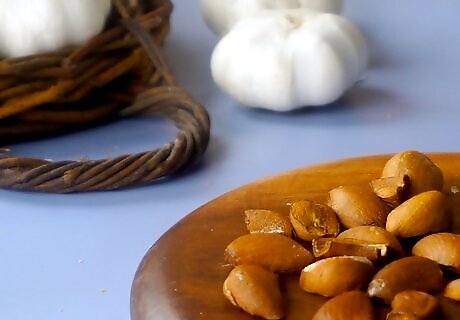
Store your garlic cloves in an airtight container at room temperature. Place the container in a cupboard, pantry, or countertop that’s consistently cool and out of the sun. The garlic will keep for up to 3 years. Check your garlic now and then to make sure no moisture has developed inside the container. Test your dried garlic for freshness by crumbling it up and tasting or smelling it. If the flavor or aroma is weak, it’s past its peak quality.
Harvesting Garlic Bulbs
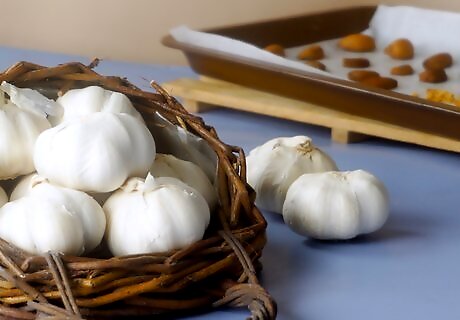
Harvest garlic bulbs for drying when their leaves begin to turn yellow. Depending on the type of garlic and your climate, this usually occurs in late June or late July. Wait until about 60% of the leaves are still green to loosen the soil underneath each bulb with a [7] and gently pull them out of the dirt. Be gentle when removing garlic from the ground. If you pull too hard, injuries can form at the stem-bulb junction and get infected.
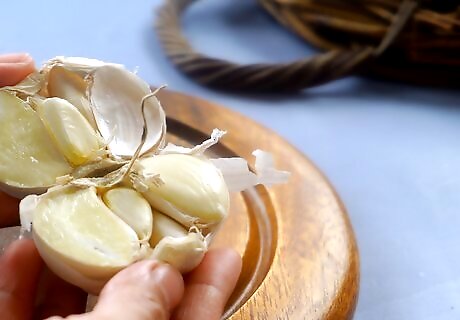
Test if bulbs are ready for harvest by slicing one open. When you’re growing your own garlic and not sure if it’s picking time yet, dig up a single garlic bulb and cut it open sideways to reveal the cloves. If they seem loose and aren’t filling their wrappers, the garlic needs more time. Remember that it’s usually better to harvest too soon rather than too late, especially in a wet year (your garlic bulbs might “pop” if they’re left too long).
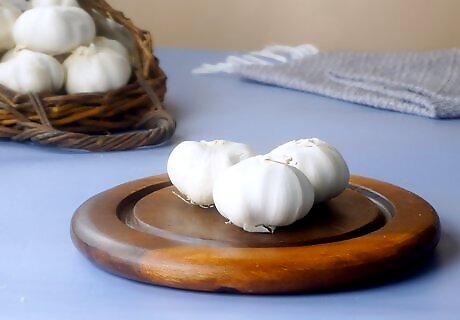
Remove loose dirt and debris from the bulbs. Shake or rub the bulbs gently with your hands to brush away loose dirt. Fresh bulbs bruise easily, so avoid banging bulbs on shovels or buckets to loosen dirt. Leave extra stubborn dirt to dry out during the curing process. If needed, use a soft brush or old toothbrush to help remove dirt. Use damaged bulbs or those with exposed cloves right away instead of drying them. Since the cloves are protected by skin, there’s no need to wash your garlic. It’ll only add moisture and reduce the garlic’s shelf life.

















Comments
0 comment